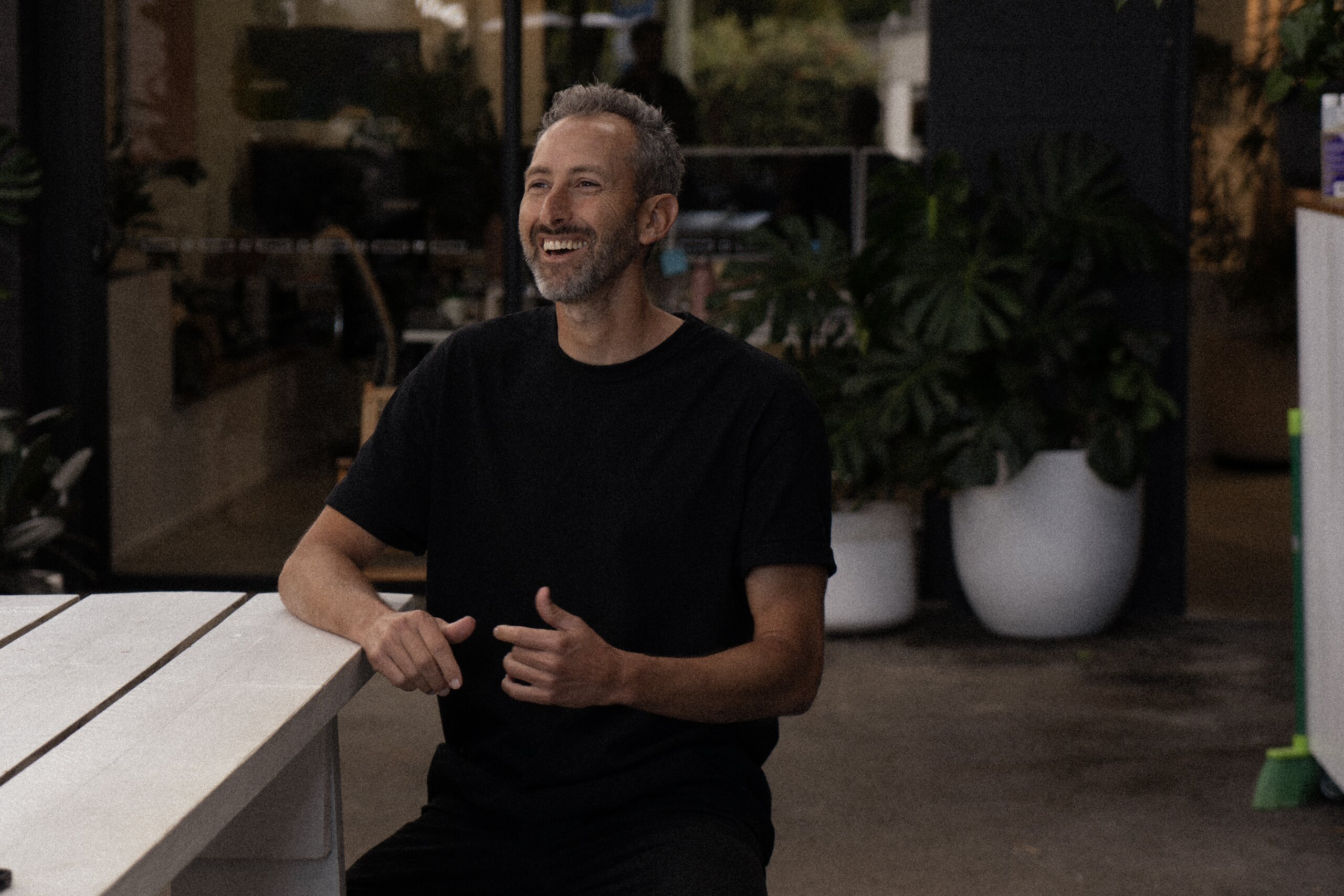My best mate Craig told me I’d never make the rep team. That was enough to explode my 12yr old mind. For the next 3 months, I played that comment back in my head, over and over.
Swoosh. Think I can’t make it hey?
Layup. Never play rep hey?
Crossover. Not good enough?
He was pretty right though, I couldn’t play basketball. But I thought I could and that’s all that mattered. I practised re-lent-lessly. I’d shoot before school. Do layups until after dark. I entered the school team and when that wasn’t enough, I joined another school's team. And when that wasn't enough I joined the local club, the magpies. And when that wasn’t enough, I’d ring up my mate Tony. He was always up for 1 v 1.
I made my Dad install a stadium-level spotlight at our house, just so I could hoop after dark.
With this obsessive schedule of basketball, I only had time for two shows on tv a week. Video hits and channel 10’s basketball show.
Back then Basketball was a bit of an outlier of a sport. But for those who were into it, it was a full-blown religion. And the finest expression of your love for basketball was to acquire NBA tapes (the American league with all the best players) and call your buds up for a pizza party, slide the tape in the VCR and feast on each amazing move and thunderous dunk.
Pretty soon, Australian network TV cottoned on to this emerging sport and started offering up weekly NBA games. It was a special era, with players like Dennis Rodman, Clyde Drexler, David Robinson, Scotty Pippen and of course, Micheal Jordan in his absolute prime.
I can’t understate just how popular basketball became in Australia during the 90’s. It’s quite possible this was the turning moment for brand America into Australian culture. And not just the export of the NBA but the brands that were tagged to American sports like Nike, Reebok, Starter, and Converse. That infiltration of American sporting brands in this country can be traced back to that period.
Last Sunday night I had a few hours to kill. I gravitated toward the couch and opened up netflix on the TV. UNTOLD: The Rise and Fall of AND1 caught my eye. AND1 was a huge brand in the basketball culture when I was coming up and my recollection is at least 6 out of 10 guys in my team were wearing AND1 shoes at the time. To put it into perspective they were bigger than Nike basketball for a short period. They were here and then, they weren’t.
So I watched the doco and it’s excellent. If you haven’t seen it or any of the other UNTOLD stories they are well worth the time. But forget the ‘fall’ part of this AND1 story, there’s an incredible brand-building lesson that every business should take from this, because despite the downfall, what the guys behind And1 did to capture the market, against very tough established competitors is in every sense, a masterclass in brand positioning.
The short version of the story goes like this. Three guys, Seth Berger, Jay Coen Gilbert and Tom Austin go to the renowned business school, Wharton. This three-pack are unknown to each other until they meet through pickup basketball games on campus. Allergic to the idea of going down the standard path of working at an investment bank, Tom Austin decides to launch a basketball brand. He then asks Seth and Jay to come on board as co-founders.
Not sure where to start, they do what almost all naive sporting brands do. Make t-shirts.
But these t-shirts are different. Instead of putting logo’s or graphics on a blank, they decided to put trash-talk on T’s. And where did they come up with these ideas? From talking trash on the court. The first round of shirts had sledges like;
“I’m Sorry, I Thought You Could Play”
“I’m The Bus Driver, I Take Everyone To School”
“What’s Wrong, Momma Forget To Pack Your Game
It worked.
Within 12 months, the shirts were selling like hotcakes and national sporting chains like Footlocker were carrying the brand. Plans were then hatched to make an AND1 signature shoe and in a feat of crazy start-up sh*t, over-confidence and business brilliance, they signed the NBA’s #4 draft pick, Stephon Marbury, to a ten-year endorsement deal. Incredible stuff.
Bad things happened though.
In Stephon's first game wearing AND1 shoes, Marbury sustains an ankle injury. Slow motion playback after playback featuring the shoe and crumbling ankle is broadcast to a national audience. Incensed after the game, Marbury’s agent is livid and tells the AND1 founders “I‘ll throw your shoes in the trash on national TV”. He didn’t, but the damage was done.
Reeling from what just happened, torn contracts and defeat, the founders were beaten down and forced to rethink everything.
This struggling moment would become legendary years later.
Two things would happen at the same time. One was about luck, the other would be about skill.
A tape came across the desk of founder Tom. On the tape was a mix of low-grade footage from Rucker Park, a famous streetball court with talented ballers doing crazy moves and trickery that you wouldn’t find on a pro-court. Inspired by this and reminded of the time the founders spent playing pickup ball Tom remarks in the doco “I realised what’s on this tape– it’s just pure, like, self-expression. And that’s when I started to understand this is the essence of who we are”.
The skill would come from Wharton frameworks and what they would learn and apply from positioning the brand based on this newfound insight.
They changed everything, from shoe design to marketing. From here on in, they’d be about the guy on the street court and to hell with the NBA. That would drive every decision. Every product has this value built into it. Cue the music and montage of incredible growth and success. The rest you’ll need to watch for yourself.
When we think about our brand, we can easily be lulled into how we look or speak. That’s part of it for sure but it’s more about how you are positioned.
What do we mean? Ask yourself how your brand is different to others.
If you run a hamburger chain and your competitors are priced low and sell a burger with questionable ingredients, you might go in another direction. You may choose top-shelf ingredients, healthy options and a premium price. That's taking a position.
It’s only when you figured out your position that you can ask yourself who would buy that type of product. That is when you start to understand how to create the visual elements that support a 'position' and attract your ideal customer.
If AND1 tried to be sophisticated like Nike, they would have failed miserably because the world didn’t need another Nike. If they tried to pull off slick visuals and used the world’s best athletes in cinema-quality advertisements, would they have gained traction as they did? The answer is no because streetball is raw, not polished. They needed an image that authentically reflected the creativity and attitude of a baller.
What are you trying to authentically represent?
Is it different for a purpose?
Is it defensible?
Can you wholly own your territory?
Every business has the capacity to find what is true and unique to its brand, to mark out a position, stake the claim and then build an identity that aligns, but it starts with positioning.
What’s yours?

